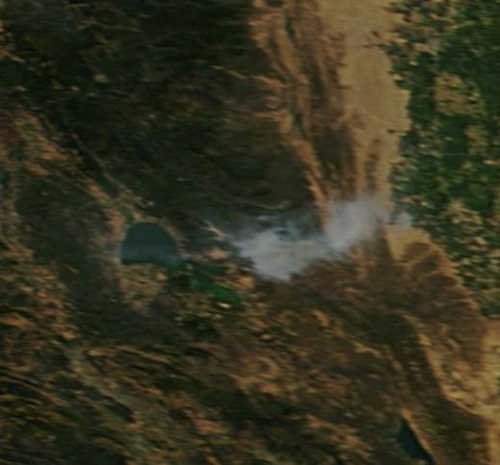
LAKE COUNTY, Calif. – Air quality and health officials reported Tuesday that the Pawnee fire is the source of the smoke plumes and haze that can be seen throughout Lake County.
Smoke was noticeable throughout Lake County in the overnight hours, with most areas experiencing light smoke or haze, according to the Lake County Air Quality Management District.
The agency said some areas close to the fire and at higher elevation may have been in the moderate to unhealthy for sensitive individual ranges.
Weather forecasts indicate “good” to “moderate” conditions should return by mid-afternoon through most of lake county air basin.
Officials said all residents should be prepared for smoke to settle into the area during the overnight hours until the fire is out.
The Lake County Quality Management District reported on Tuesday that air quality conditions remained in the good range for most of the county.
However, the overnight forecast indicates a potential for settling of smoke into the basin. In areas that become impacted by smoke “moderate” to “unhealthy” air quality may be experienced.
Similar conditions are expected Wednesday, though north by north east winds are forecast Tuesday night into Wednesday, which could bring more smoke into the basin. Slight variations in the wind direction can result in significant smoke impacts.
Conditions can change quickly from “good” to “unhealthy,” and this may be the pattern for the next few days, officials said.
Localized areas may experience intermittent particulate levels in the “moderate” to “unhealthy” range. All areas of Lake County may be significantly impacted should meteorological conditions worsen, the air district reported.
Lake County Public Health Officer Dr. Sara Goldgraben advised residents to be cautious in resuming normal outdoor activities when smoke is present in your area.
“Variable weather conditions and ongoing fire activity may result in localized areas of reduced air quality, which could still pose health risks to people with underlying health conditions. Since we can’t always predict when and where ‘pockets’ of poor air quality may occur, it is prudent to be careful until conditions stabilize,” she said.
Smoky conditions can cause irritation of the eyes, nose and air passages, which can be hazardous in young children, the elderly, individuals with heart conditions or chronic lung disease such as asthma, bronchitis and other respiratory conditions.
Individuals with asthma, bronchitis, emphysema and other lung or heart diseases should carefully adhere to their medical treatment plans and maintain at least a five-day supply of prescribed medications. They should limit outdoor activity and unnecessary physical exertion. Air conditioning that recirculates indoor air should be used, when available. Drinking plenty of water to avoid drying of the airways is recommended, unless restricted for medical reasons.
Dust masks are not protective against the most harmful pollutants caused by wildfire smoke that drifts to nearby areas. They are useful in filtering out the ash and larger particles that are encountered in burn areas. Air purifying respirators, such as N-95 filtering face pieces, may be effective in reducing harmful particulate matter, but also increase the work of breathing, can lead to physiologic stress, and are not recommended as a general protective measure.
The “good” to moderate” air quality forecast results from lower levels of fine particulates in the smoke and the possibility of increased ground level ozone. These are generated when combustion products in the smoke combine with the high temperatures, sunlight, and humidity. Other chemical reactions reduce visibility by forming secondary particulates. Localized areas of unhealthy air, regional haze, and particulate from this fire can be expected until the fire is out.

 How to resolve AdBlock issue?
How to resolve AdBlock issue? 



